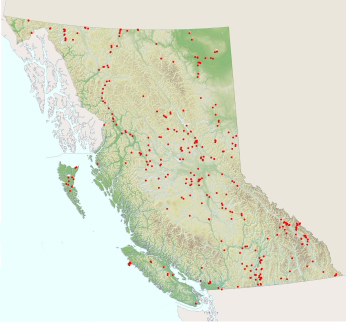Large, swift-flying dragonflies, usually marked with blue, green or yellow. Adults hunt tirelessly for insects over ponds, lakes and streams, and wander widely in search of prey. Most species rest in a vertical position, but a few sit flat on the ground. Females have a prominent ovipositor and lay eggs in water plants or floating wood above or below the water line. Larvae are slender and sleek, with flat labia lacking bristles; they are rapacious hunters among water plants. Recently, A. californica and A. multicolor have been transferred from Aeshna to Rhionaeschna.
|
Uncommon in southern valleys in B.C. More common at higher elevations and northward, it is the most common darner in the Yukon. Lives in a variety of habitats, mainly containing acidic waters, but it is most abundant in peatlands dominated by extensive stands of sedges.
|
|
